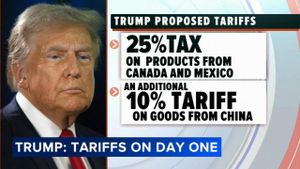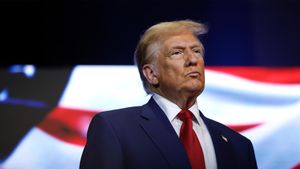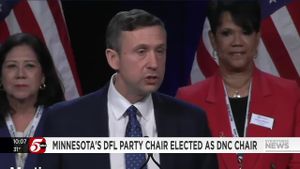The Japanese yen has seen notable fluctuations following announcements from key financial authorities, particularly surrounding the policies of the newly inaugurated U.S. President Donald Trump. On January 20, 2025, during the New York foreign exchange market, the USD/JPY pair was influenced heavily by Trump's decision to delay new tariffs on imports. This announcement prompted significant selling pressure on the dollar, pushing the currency down as low as 155.42 yen at one point.
Trump's inauguration speech did not reveal any immediate tariffs, which had been anticipated by market participants. Observers noted this as one of the factors contributing to the yen's relative strength during trading. With Trump stating his intention to conduct thorough analyses before imposing tariffs on countries like China, Canada, and Mexico, uncertainties affecting the dollar's performance were heightened.
According to financial analysts, the delay of tariffs suggests possible steadiness for the yen, as traders re-evaluate the potential impact of subsequent U.S.-China trade tensions. Observations from currency traders indicated the dollar exhibited considerable weakness during this transitional period, often teetering close to 156 yen before finally settling back around 156.58 yen during Tokyo's trading hours.
Further complicity arose from Bank of Japan (BoJ) policy discussions, as high-ranking officials, including Central Bank Governor Ueda, examined the broader economic ramifications from Trump's policy directions. Reports from various financial experts speculated on the likelihood of additional interest rate hikes from the BoJ, especially with market expectations showing around 80% probability for the first quarter of 2025.
Such speculation was tied to record-high stock indices from Europe, which prompted the euro to rise significantly against the yen, entering the 161.31 yen range. Discourse around the currency pair's volatility was fueled by potential forthcoming policies from the BoJ to counteract inflationary pressures, affecting their rate-setting meetings scheduled for January 23-24, 2025.
Despite the considerable movements observed, experts have suggested the core influencing factors remain Trump's approach to tariffs and the steady stance maintained by the BoJ. Insights were provided by market strategists, who expected yens might apply steady support moving forward, especially as the markets adapt to the new U.S. administration's agenda.
Through the international backdrop, leading financial indices and securities reflected the uncertainty stemming from this unique economic climate. Enhanced focus on Trump's early administration policy particulars informed the market's immediate reactions, including shifts seen across major currency pairs like the euro and the pound against the dollar.
Looking forward, continued monitoring of Trump's administration's evolution will be key as it applies pressure to the dollar and potentially adjusts the dynamics within the foreign exchange marketplace. The yen's newfound strength, paired with the BoJ's reactive monetary strategies, lays the groundwork for intriguing shifts as 2025 continues. Market analysts postulated various scenarios, including the optimistic outlook on inflation stabilizing, which may dictate upcoming trading patterns.
Pundits voiced their projections, indicating the distinct nature of the foreign currency dialogue - with currency options seeing increased volatility rates as investors brace for potential pivot points driven by upcoming monetary policy reflections from the BoJ.
Overall, as Trump's presidency sets forth its economic phase, the global economic watchers remain cautious yet curious about how these dynamics will affect not only the dollar-yen exchange but also overall international economic rapport. Hence, neutral economic conditions are likely to linger, submitted to the cyclical nature of political influence bolstered by market responses as reflected through foreign exchange behaviors.



